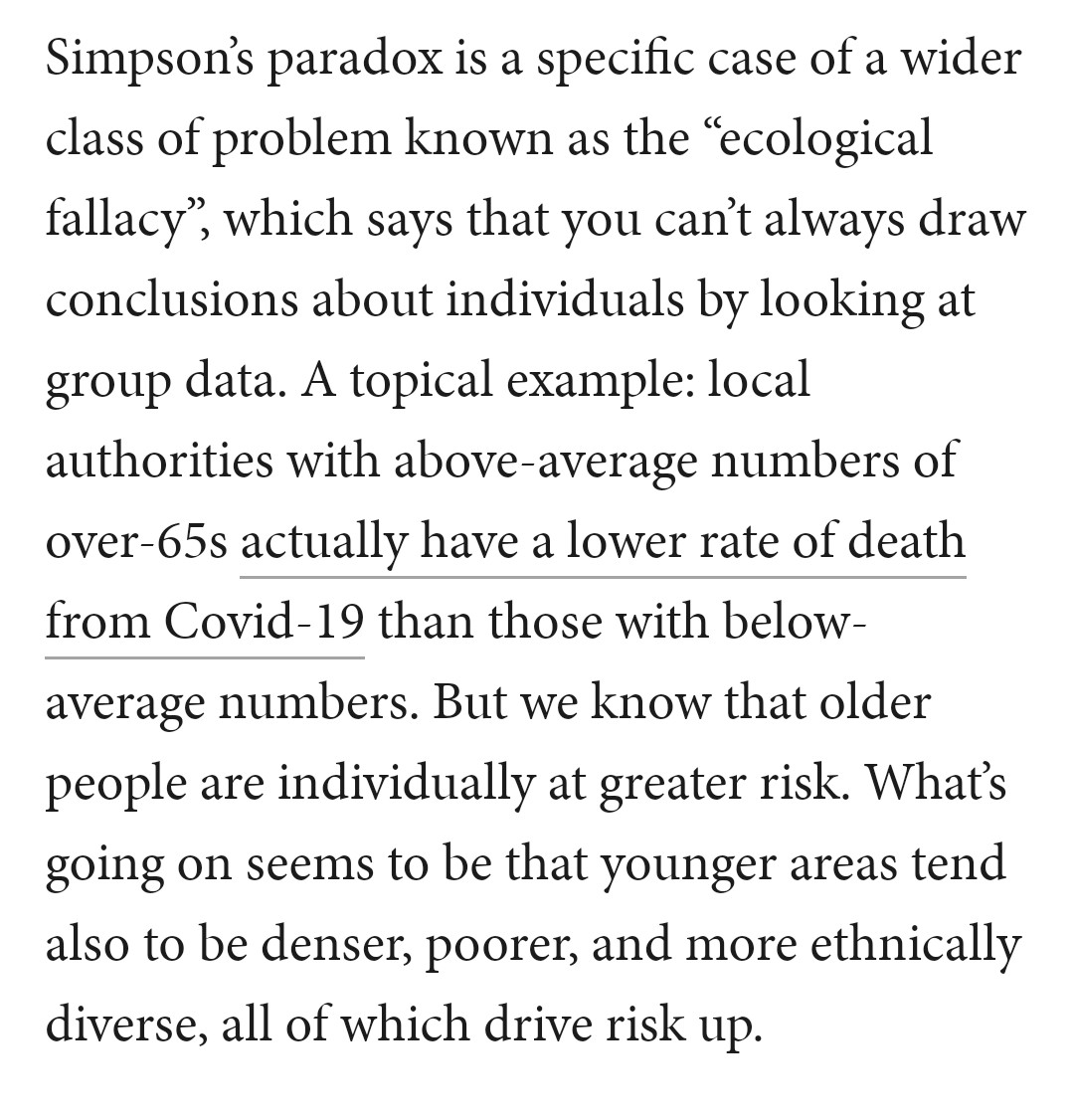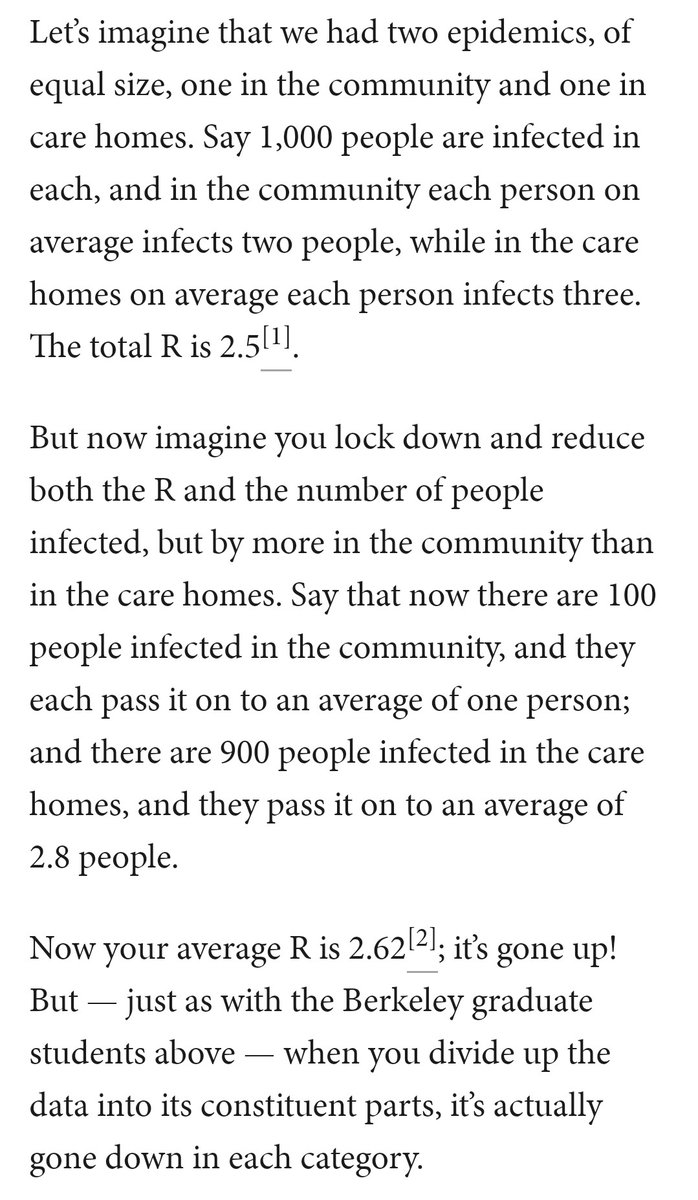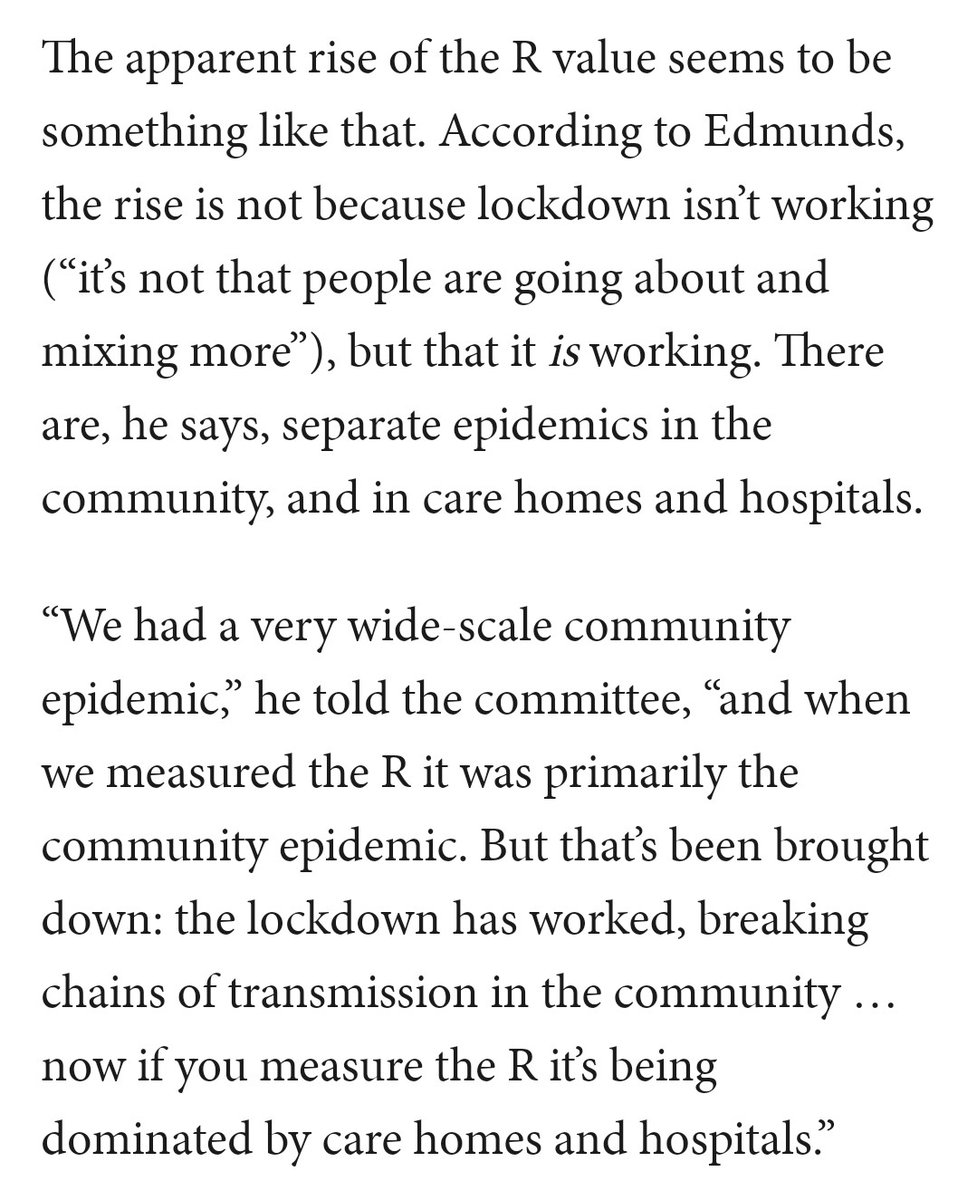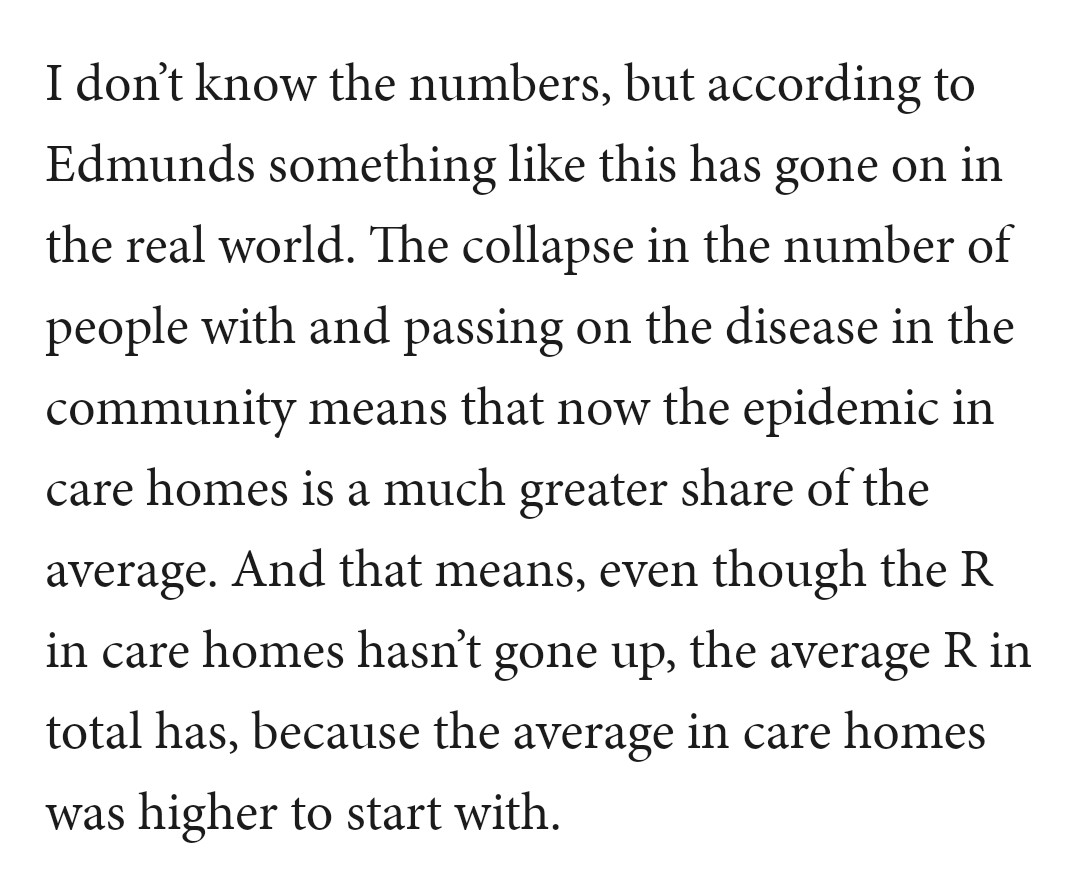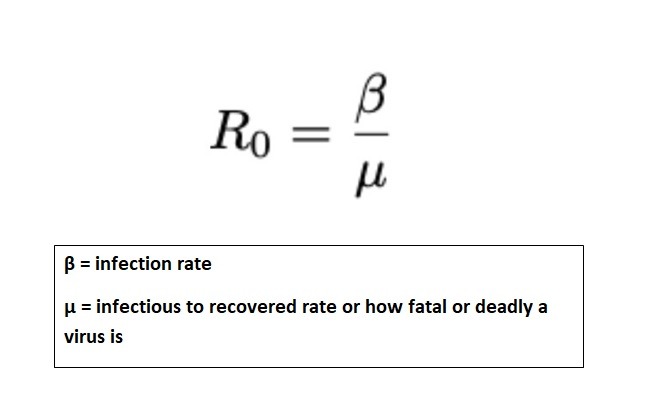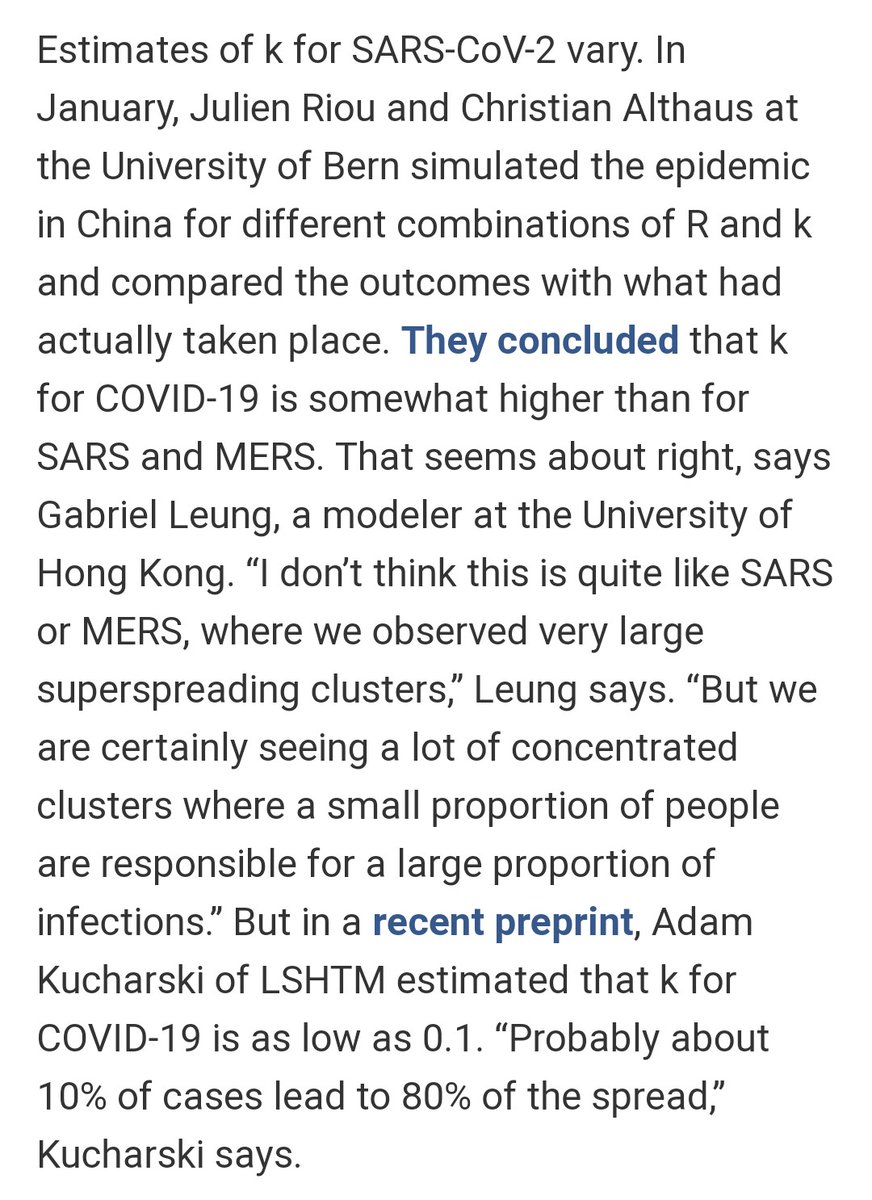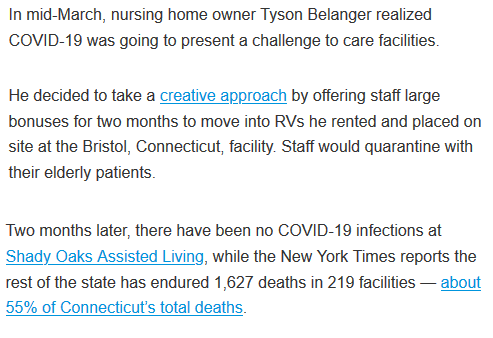An important read on a "paradox" of calculating the R. The overall R is useful to determine whether we have an epidemic, but the failure to recognise that it& #39;s actually composed of different complex subsets can lead to misconceptions, also deathly outcomes https://bit.ly/3c3UNjX ">https://bit.ly/3c3UNjX&q...
First, we should remember that stats sometimes can create anomalies. The paradox of lockdown and social distancing rules are—while they are maintained to minimise transmission risks—they can also artificially push up the numbers of R instead!
Which makes it look as if the lockdown didn& #39;t work. This is no coincidence because of the way the overall R of a country is calculated especially if we consider important factors like *different* infection and fatality rates between two groups. Here is an illustrative example:
The decrease in individual group R can be attributed to decrease in infection rate or increase in death rate (SIR model). The combination of slightly lowered infection rate + initial high fatality in elderly makes the R for this group lower that contributes to higher overall R.
Still related to the topic, there is also a very compelling article that reveals a new finding that the virus is transmitted mostly through *superspreading* events! Which again reminds us how necessary contact tracing (and tracking) is!  https://abs.twimg.com/emoji/v2/... draggable="false" alt="😉" title="Winking face" aria-label="Emoji: Winking face"> https://www.sciencemag.org/news/2020/05/why-do-some-covid-19-patients-infect-many-others-whereas-most-don-t-spread-virus-all">https://www.sciencemag.org/news/2020...
https://abs.twimg.com/emoji/v2/... draggable="false" alt="😉" title="Winking face" aria-label="Emoji: Winking face"> https://www.sciencemag.org/news/2020/05/why-do-some-covid-19-patients-infect-many-others-whereas-most-don-t-spread-virus-all">https://www.sciencemag.org/news/2020...
(In case someone missed it, I have a post about the particular topic on my blog.) https://marthaargerich.wordpress.com/2020/05/04/when-harry-meets-sally-how-trace-and-track-app-can-minimise-the-risk-from-misdiagnosis-and-catch-the-superspreader/">https://marthaargerich.wordpress.com/2020/05/0...
The distribution of spread is so uneven that it differs from pathogen to pathogen. Some diseases cluster more than others, and it turns out, Coronaviruses like SARS and MERS are champions of clustering. Their spread is particulary “patchy”.
There isn& #39;t still not yet a well-established data on "k" for the virus, but a paper by @AdamJKucharski estimates it to be as low as 0.1 which means that "80 % of secondary transmissions may have been caused by a small fraction of individuals (~10%)" https://wellcomeopenresearch.org/articles/5-67 ">https://wellcomeopenresearch.org/articles/...
So, how important is this finding related to containment strategy, especially in the case of high death rate in care homes?
1) The virus is spread easier in closed space and the fact that the more particles someone releases when they talk the more virus is released into the air.
1) The virus is spread easier in closed space and the fact that the more particles someone releases when they talk the more virus is released into the air.
2) Elderly usually have hearing impairment, so "shouting" is almost a "norm" in care homes.
Combined them with the fact that care home staff are younger and live in denser area may explain the frequent virus transmission that contributes to the high death rate of this group.
Combined them with the fact that care home staff are younger and live in denser area may explain the frequent virus transmission that contributes to the high death rate of this group.
There is a successful story of a man from Connecticut, USA, who asked his care home staff to move on site, so they quarantine with the elderly. This approach so far, creates zero infection in his care home. https://www.wbur.org/hereandnow/2020/05/18/nursing-home-coronavirus-rvs">https://www.wbur.org/hereandno...
There is already a similiar story actually in the UK, where the staff are setting up tents so they can live inside the facility thus prevent further transmission from the outside. https://www.dailymail.co.uk/news/article-8249097/amp/Care-home-staff-TENTS-no-one-policy-shield-residents-coronavirus.html?__twitter_impression=true">https://www.dailymail.co.uk/news/arti...
Of course, others factors play crucial roles such as testing both the staff and residents, adequate PPE supply, or if necessary to move infected elderly into separate facilities. https://www.nbcnews.com/news/us-news/connecticut-launches-bold-new-approach-virus-crisis-covid-19-only-n1204546">https://www.nbcnews.com/news/us-n...
The route out of this care home saga is possible if only the government can maintain incentive and show appreciation and support for people who work in the related field.

 Read on Twitter
Read on Twitter